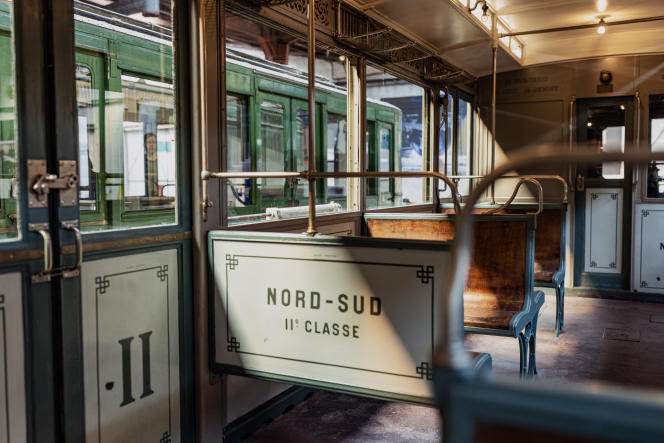Of all the presidents of the RATP he is the most “ferrovipath”. This is the name given to fans of railway equipment and history. Jean Castex, whenever he has the opportunity, demonstrates it to his teams. At Denfert-Rochereau, he drops an anecdote about the history of the station that even the agents don’t know. He attended incognito the last circulation of an MP73 train (“Métro Pneu tender 1973”) on line 6 of the metro and he did not miss the launch of the new cars on line 11.
When he learned that the SNCF wanted to recover the hangars where the RATP keeps a copy of each metro and each bus, in Villeneuve-Saint-Georges (Val-de-Marne), Jean Castex did not hesitate for a second. For him, it is obvious: these objects must be kept in a museum open all year round. He put the project under study.
Currently, the reserve is only open during Museum Night or for the European Heritage Days, which take place this year on September 16 and 17. Two thousand eight hundred visitors are expected in the RATP reserve, near Villeneuve-Triage station (RER D). Like every year, entries were reserved within a quarter of an hour.
Horse omnibus
Wandering through these 17,000 square meters is a childhood dream. There we come across the horse-drawn omnibuses which circulated in 1828, the tramways of the Universal Exhibition of 1850. We relive the standoff between the City of Paris, which wanted a strictly Parisian underground network, and the State, which wanted he leaves the capital. They ended up agreeing for the Universal Exhibition of 1900 and the inauguration of the metro by the Paris Metropolitan Railway Company, the CMP.
It was she who commissioned the architect Hector Guimard for the “Guimard accesses”, green Art Nouveau style porticos, which are the signature of Paris. RATP was only born in 1949, from the merger of CMP with its competitor, Compagnie Nord Sud (CNS), into a single public establishment.
In Villeneuve, we discover above all a reconstruction of the first metro, based on original parts. “It looked like what we already knew at the time: the tramway”, explains Claire Morillon, historian in charge of heritage within the RATP group. The train is made entirely of wood, with leather seats in first gear, wooden seats in second gear, and nets everywhere to put your hat on.
The next model is made of metal, a lesson learned from a fire on line 2 which left 84 dead. It is the Sprague-Thomson train, named after the engineer who developed the traction system, with its green cars for the second class, red for the first. It commands admiration: it remained in service between 1908 and 1983! These are just two examples among many. The highlight of the reserve is a huge model, with all the controls on which the agents trained to learn how to organize metro traffic.
You have 50.13% of this article left to read. The rest is reserved for subscribers.
